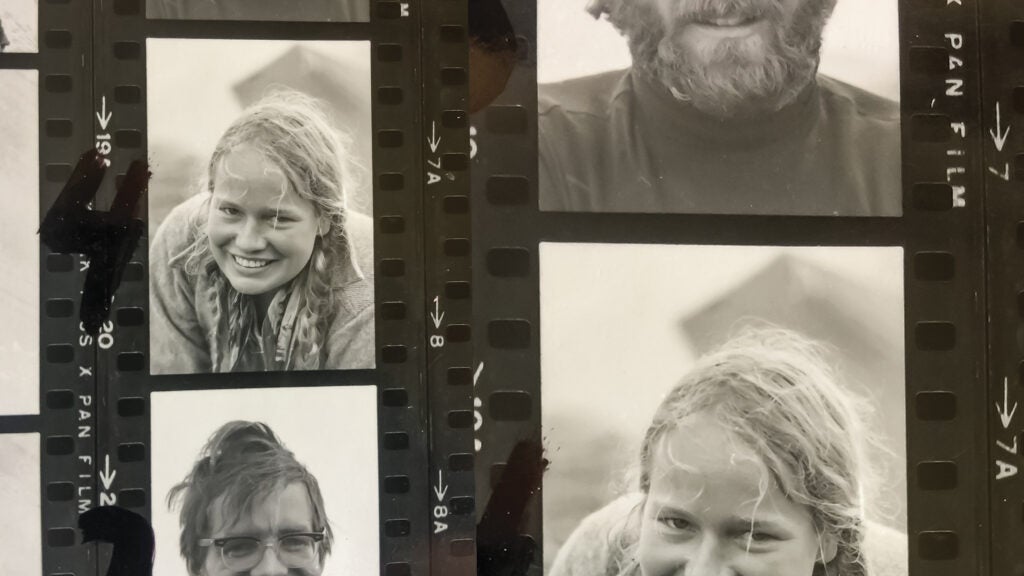No products in the cart.
Outdoor Adventure
The Himalayan Tragedy That Forever Changed Mountaineering
Roskelley had always respected Hoey’s climbing, believing her exceptionally strong and capable, but he’d also anticipated that her presence on the expedition would be a problem—partly because she and Lev had recently broken up, and partly because, in Roskelley’s words, “Marty was one of those gals that just attracted men.” He saw her as a significant emotional distraction.
Before the expedition began, Willi had tried to convince Roskelley that the team had a chance “to show that women and men can do this sort of thing together, without problems.” Roskelley wasn’t alone in his concerns about coed expeditions; in the 1970s, the mountaineering world was grappling with the increasing presence of women adventuring at high altitudes.
“The seventies were a particularly fraught period for gender issues in American mountaineering history,” says Katie Ives, the former editor in chief of Alpinist. “There were more women going on Himalayan expeditions than ever”—including women who’d completed climbs of Manaslu and Everest. In the U.S., the 1972 passage of Title IX, which prohibited sex-based discrimination in schools that received federal funding, helped open the door for females who wanted to compete in high school and college sports. By the mid-1970s, Ives says, “You had a lot of really strong female athletes who weren’t necessarily present before.”
In mountaineering, currents of individualism and new ways of thinking were bumping against the traditional siege style of Himalayan expeditions. “The goal had been to set up a pyramid of supplies to support two climbers to get to the summit,” Ives says. “In the 1970s, suddenly everybody wanted to go to the summit, and you had climbers who wanted more of a consensus style of leadership” than had been the custom before.
On the Nanda Devi expedition, both issues cropped up with Hoey, whose illness divided the team. Once she’d lost the ability to walk and talk, States and Roskelley insisted that she descend to a lower altitude to recover. Willi agreed, and the team mobilized to help carry her 2,000 feet down to an alpine meadow known as Dibrugheta. After receiving supplemental oxygen there, Hoey started feeling better, but Roskelley and States were convinced she’d suffered cerebral edema, a swelling of the brain that can be fatal. States recommended that Hoey be evacuated. The other team members, and Hoey herself, did not immediately agree.
A second option was for Hoey to stay in Dibrugheta for a few days or weeks before reuniting with the team at higher altitude. The third was to move her even farther down the trail. Several team members offered to escort her, Roskelley recalls, adding that, in his view, their thinking was clouded because she was an attractive and likable person.
Ultimately, Willi, Lev, and Harvard said they wanted to leave the decision to Hoey. “And that’s when the whole thing blew up,” Roskelley says.
Willi was a persuasive debater, and he kept throwing out reasons why States’s professional medical opinion wasn’t necessarily right. Today, States compares bickering with Willi to debating a climate-change denier. “It’s like, if people don’t believe in the science, then you really can’t argue with them.”
States and Hoey ended up in tears, and Hoey finally told everyone she wanted to be evacuated; she felt guilty about the storm swirling around her and understood her health was at risk. She was taken away by helicopter on July 21. (Hoey would die on Mount Everest in 1982, very close to becoming the first American woman to reach the summit.)
The intensity of the episode cast a pall over the expedition, and then another medical issue arose: Devi had developed a protruding hernia on her groin. This is caused when tissue, such as part of the intestine, bulges through a weak spot in abdominal muscle.
States didn’t examine Devi, but he did express concern when he heard about it. “States was pretty adamant that this is a high-risk thing, having that protruding hernia and going to altitude,” Lev says. Everyone was exhausted from dealing with the decision about Hoey, and Devi was Willi’s daughter, meaning she was going to do exactly what she wanted.
Devi remained in high spirits. In addition to having mothered Hoey for several days, she moved around the campsite at night, helping the porters set up tents, using her rudimentary Hindi and her Nepali to communicate. Before turning in, she’d occasionally join Willi for a duet of camp songs on flute and harmonica.
Roskelley found himself alternately infuriated and impressed with Devi. In his book, he recalled feeling tenderness as he watched her working in camp one afternoon, cooking a special cheese sauce that had become everyone’s dinnertime favorite. “I had been listening to her contribute good judgment and compassion to the group discussions,” he wrote. “My impressions of her as stubborn and single-minded were certainly changing, although I still had the feeling that Devi considered me a male chauvinist.”
Though Devi had mostly stayed out of the Hoey debate, she was the only person capable of serving as a mediator for Roskelley, Carter, and Willi, who were jostling to make big decisions after the argument, occasionally stepping in to tell her dad he was being unreasonable. When Willi wouldn’t listen to anyone else, he’d listen to her.
Source link

